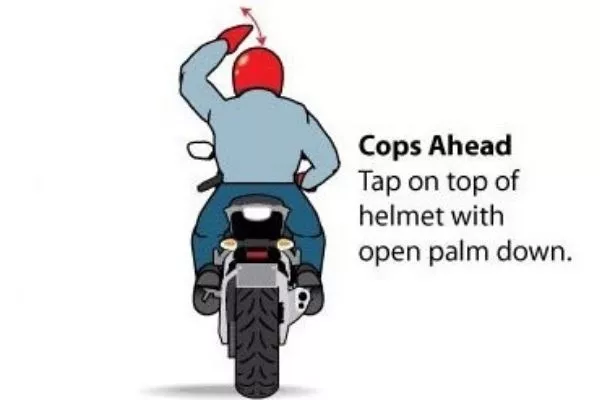Size being their inherent advantage, four-wheeled vehicles are much more visible on the road. Their exterior lights are easier to spot, and all it takes to let other drivers know of your intention is a simple flick of the turn signal stalk (something that many motorists tend to forget, but that’s a conversation for another time). Motorcycles, being smaller and lighter contraptions, can be much more difficult to spot.
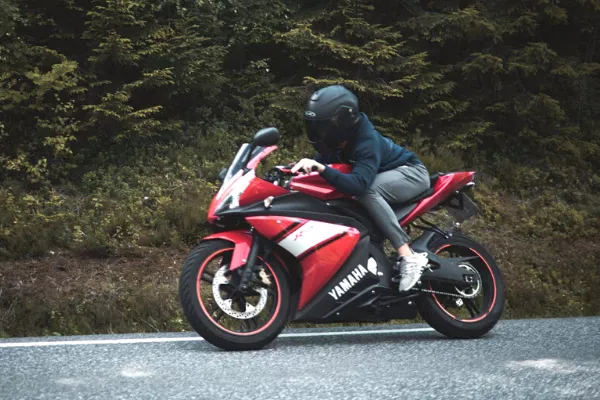
Riders that are properly trained use special hand signals
Bike riders have therefore devised their own hand signaling system, which turns out to be a lot more versatile and expressive than just watching a pair of blinking lights. We know how much motorcycles and their riders get a bad rap these days. But in the rare instance that you see a properly trained biker on the road, you might want to pay attention to the hand signals they are making, whether you’re handling two wheels or four.
1. Making A Left Turn
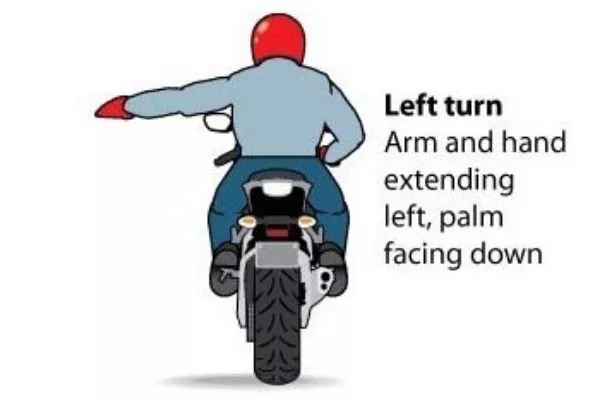
To signal to make a left turn, the rider fully extends the left arm to the side. The fingers of the left hand are also extended, with the palm facing down. This can be used in conjunction with the left turn signal light, for the benefit of other road users.
2. Making A Right Turn
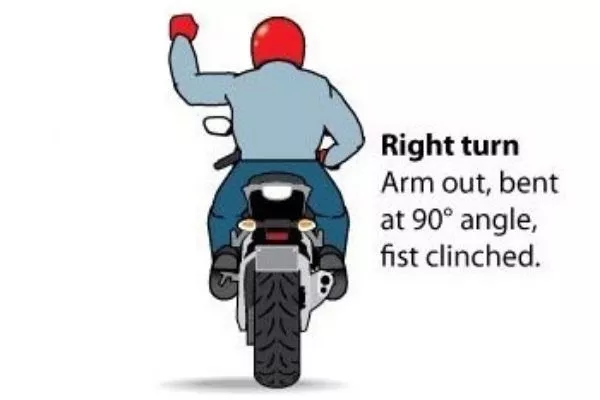
To make a right turn, the rider again extends the left arm. This time however, the arm is bent upwards at a 90-degree angle. The left hand is clenched in a fist. As with the left turn hand signal, this can also be used along with the right turn signal light.
3. Coming To A Stop
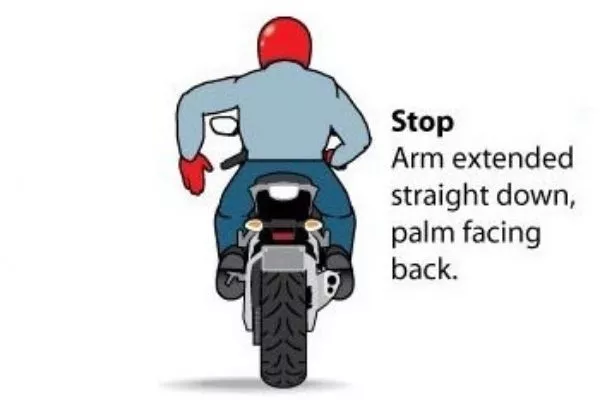
If the rider is signaling others behind to stop, the left arm will be extended. The opposite of the right turn hand signal, the arm will be bent downwards at the same 90-degree angle. The left hand will be open, with the palm facing backward.
>>> Related: Keeping safe on the road aboard a car and motorcycle
4. Indicating A Hazard
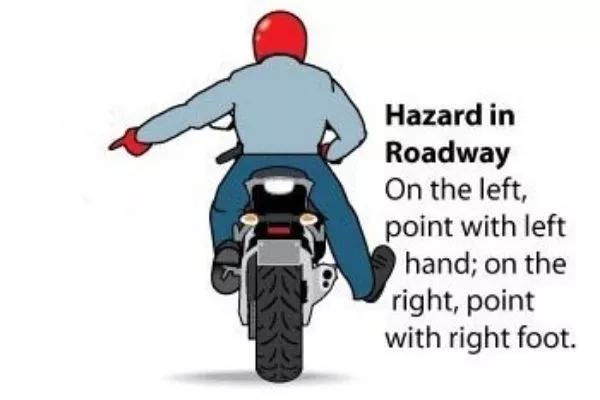
To signal those behind that there is a hazard present ahead, the rider will extend the left arm and point a finger towards the left side. The right leg will also be extended, with the foot pointed towards the right side.
5. Turn Your Signal On
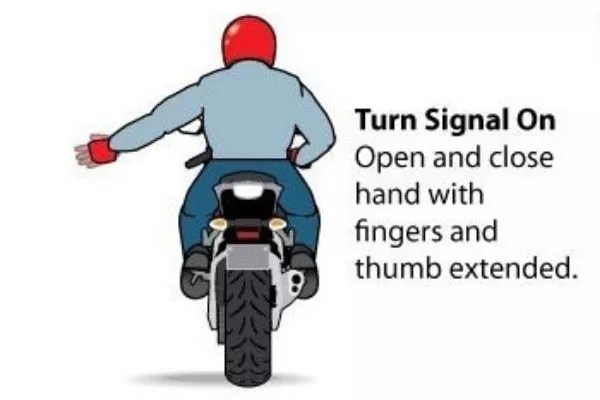
Sometimes other motorists need to be reminded to use their turn signals when turning into a corner. To do so, the rider will extend the left arm, alternately opening and closing the left hand, with the fingers and thumbs at full length.
6. Police/Checkpoint Ahead
To signal the presence of law enforcement personnel or manned checkpoints, the rider extends the left arm. The left hand is used to tap the top of the helmet, with fingers extended and palm facing downward.
7. Slowing Down
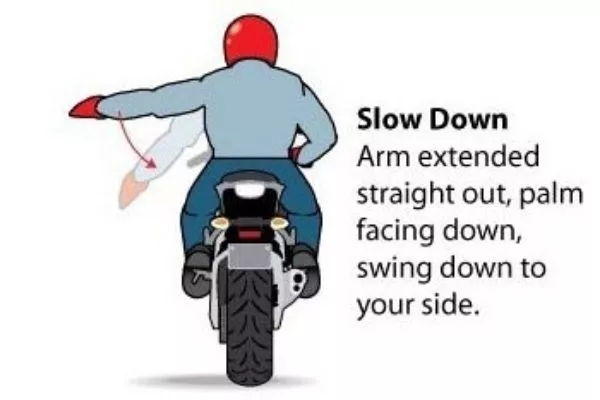
To signal to others that they need to reduce speed, the rider extends the left arm forward. With the palm of the left hand facing downward, the left arm is then moved in a swinging motion towards the rider’s side.
8. Speeding Up
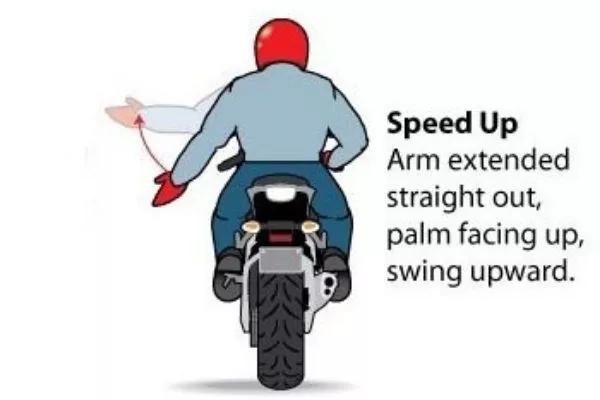
If the rider wants to signal others to speed up, the left arm is again extended forward. As in the hand signal for slowing down, the arm is swung at full length from the rider’s front to side, with the left palm now facing upward.
>>> Related: 4 basic hand signals for driving you should know and understand
9. Follow Me
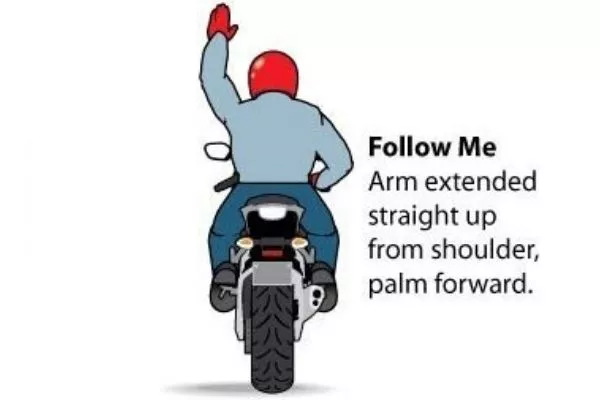
To relay to other road users that they should follow, the rider extends the left arm all the way upward. The left palm faces forward, in the direction the rider is headed.
10. Pull Over
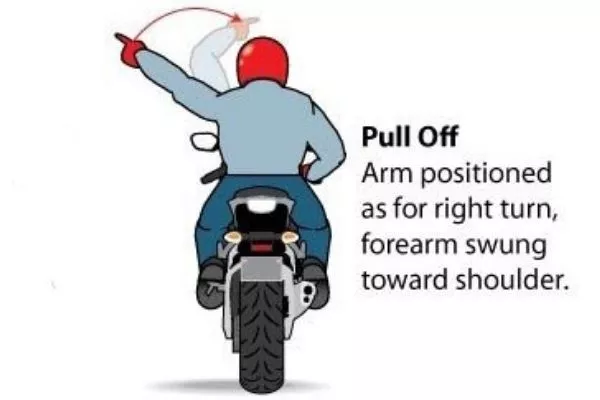
To tell other riders and drivers to pull over, the rider extends the left arm. This will then be moved in a swinging motion towards the rider’s right shoulder, with the left index finger pointing towards the right or the direction of the curb.
11. Head To The Front
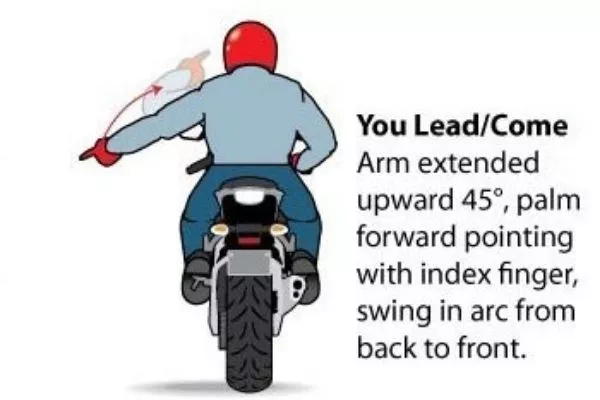
If the rider is signaling another motorist to move ahead, the left arm will be extended upward at a 45-degree angle and swung in an arc towards the front of the rider and vice versa. The left palm faces forward, with the index finger pointing in the same direction.
12. Fall In Line
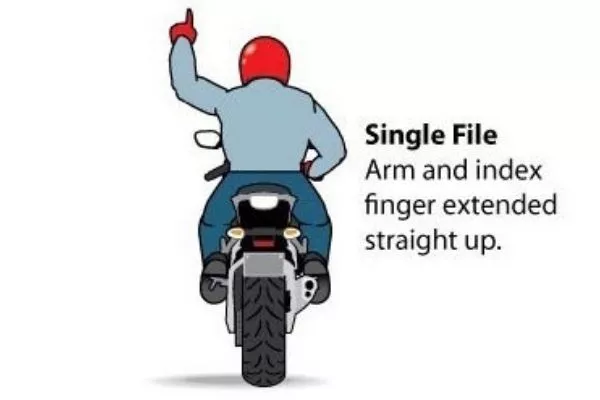
To signal other riders or drivers to form a single file behind the rider, the left arm is stretched upward. The left index finger is likewise extended, pointing in the same upward direction.
13. Double File

To signal to other riders or drivers to form a double-file behind the rider, the gesture is the same as the single file hand signal. Along with the left index finger, the left middle finger is also extended, with both fingers pointing upward.
14. Stopping For Refreshments
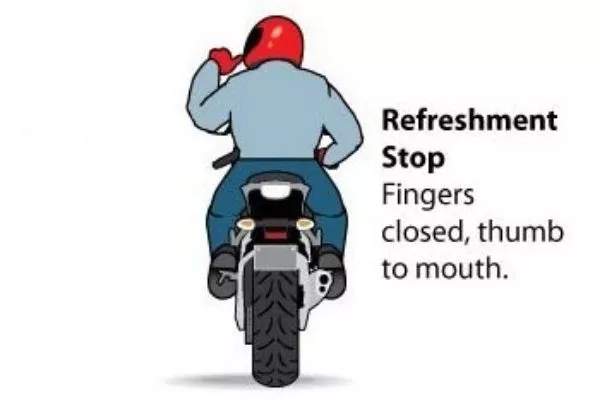
In communicating with other motorists that the rider intends to make a stopover for refreshments, the rider motions toward the helmet’s face using the left arm. The left hand is balled into a fist, with only the thumb extended and pointed towards the rider’s mouth.
15. Taking A Comfort Stop
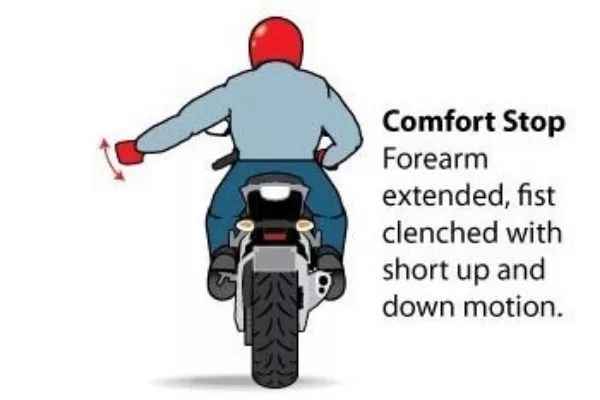
To signal to other road users that the rider needs to make a comfort stop, whether to rest and stretch or just take a bathroom break, the left arm is extended. With the left hand balled into a fist, a short up-and-down motion is made using the forearm.
16. Filling Up On Fuel
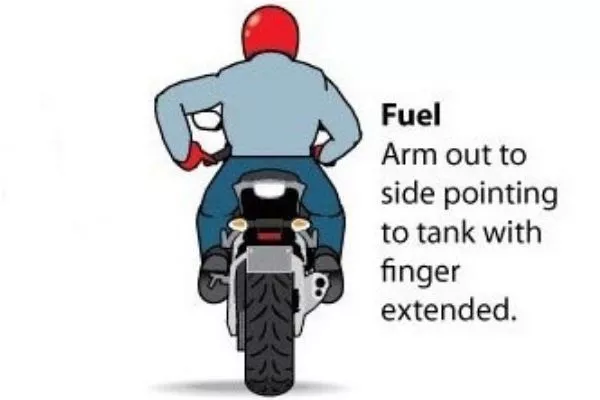
If the rider wishes to relay that a fuel stop is necessary, the left arm is extended to the side. The left index finger is extended as the forearm points to the motorcycle’s fuel tank.
Get more safe driving (and riding) tips at Philkotse.com.
Recent posts
- no blowing of horn sign Jan 05, 2021
- no right turn on red Aug 17, 2020
- A Complete guide to No Parking Signage in the Philippines Aug 16, 2022
- The importance of abiding traffic lights and road signs Aug 16, 2022
- A drivers' guide to the traffic signal lights in the Philippines Nov 17, 2020
